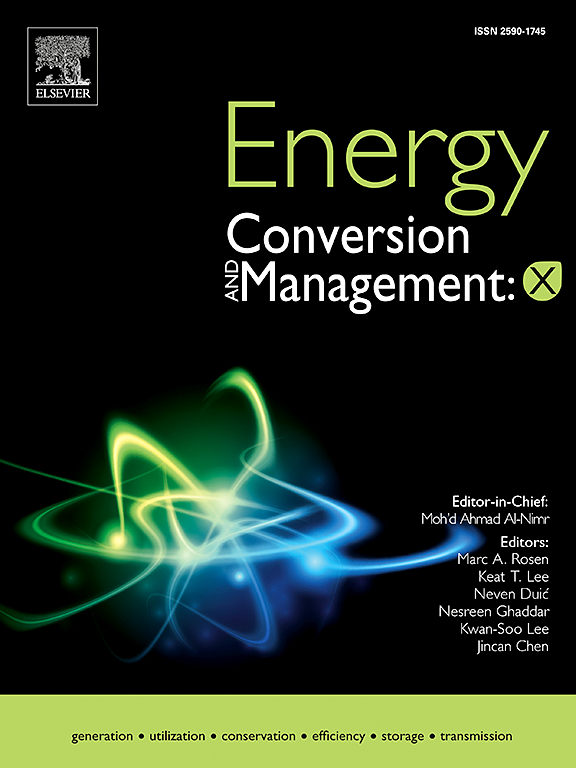Comprehensive design and 3E analysis of an ORC-based waste heat recovery system with multiple waste heat feeds from ammonia production
IF 9.9
1区 工程技术
Q1 ENERGY & FUELS
引用次数: 0
Abstract
Ammonia production is associated with voracious energy consumption. A significant amount of waste heat is generated during ammonia production which can be harnessed using a waste heat recovery (WHR) subsystem. However, limited attention has been paid to the cycle configuration design with multiple waste heat feeds. This study proposes an ammonia production system with an integrated WHR subsystem based on the organic Rankine cycle (ORC). Seven waste heat feeds from ammonia production are considered. Two newly designed ORC configurations are proposed: a four-stage ORC (Scenario 1) and a preheated three-stage ORC (Scenario 2). Following working fluid selection using the genetic algorithm, cyclohexane is identified as the optimal choice from 27 organic fluids, yielding the lowest levelized cost of ammonia (397.44 and 397.39 $/t NH3 in Scenarios 1 and 2, respectively). Thermal efficiencies of 15.19 and 16.55 % and exergy efficiencies of 57.04 and 57.93 % are observed for Scenarios 1 and 2, respectively. In comparison, the WHR subsystem significantly improves the economic benefits of ammonia production. This study presents a comprehensive design for a WHR system that considers multiple waste heat feeds, cycle configurations, and working fluids. Through detailed fluid selection and configuration design, the levelized cost of ammonia is < 400 $/t NH3, which is an improvement upon existing research. This study provides an effective method to mitigate energy consumption in the energy-intensive ammonia industry.

求助全文
约1分钟内获得全文
求助全文
来源期刊

Energy Conversion and Management
工程技术-力学
CiteScore
19.00
自引率
11.50%
发文量
1304
审稿时长
17 days
期刊介绍:
The journal Energy Conversion and Management provides a forum for publishing original contributions and comprehensive technical review articles of interdisciplinary and original research on all important energy topics.
The topics considered include energy generation, utilization, conversion, storage, transmission, conservation, management and sustainability. These topics typically involve various types of energy such as mechanical, thermal, nuclear, chemical, electromagnetic, magnetic and electric. These energy types cover all known energy resources, including renewable resources (e.g., solar, bio, hydro, wind, geothermal and ocean energy), fossil fuels and nuclear resources.
 求助内容:
求助内容: 应助结果提醒方式:
应助结果提醒方式:


